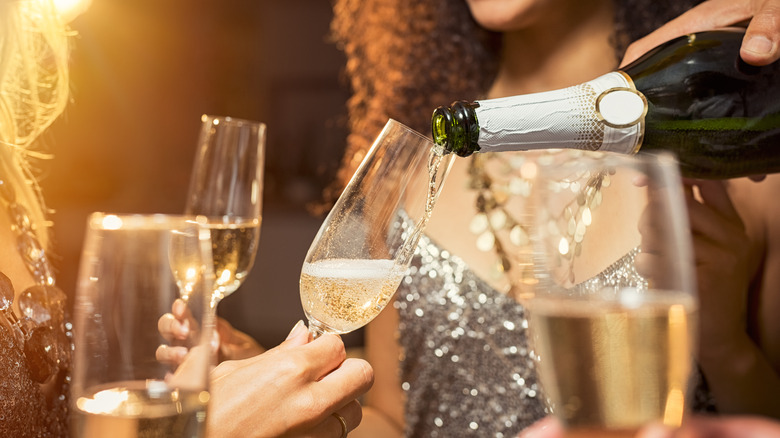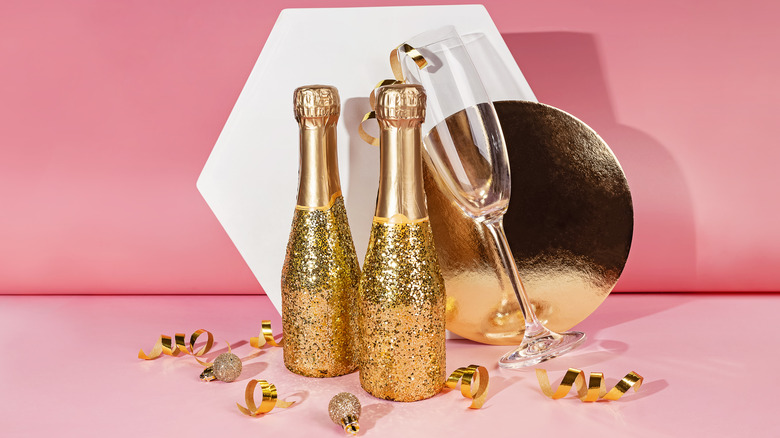Why It's Not A Good Idea To Store Leftover Champagne
Each year, over 360 million glasses of sparkling wine are consumed on New Year's Eve, according to Wallet Hub. So there's a good chance you'll be downing some bubbly as the clock approaches midnight this year. But once the party's over (or once you've simply had your fill of champagne), you may be left with a few half-empty bottles. In the spirit of not wasting food (or drink, in this case), it's tempting to try to store your leftovers in the fridge — but doing so may not be such a great idea after all.
Part of the fun of drinking champagne lies in its nickname, "bubbly." After all, if we wanted a flat wine, we could opt for a typical red or white. It doesn't matter whether your bubbly is brut, dry, or blanc de blanc, as soon as you pop a bottle open, the carbon dioxide in the drink is let out in the form of bubbles, and the drink slowly begins to lose its carbonation. Plus, if your champagne was sitting out on the counter all night, the room temperature and exposure to air may have caused the bubbles to dissipate. And in some instances, leftover bubbly can take on dull, unappealing flavor notes.
Buy champagne bottles in smaller sizes instead
So if you want to serve and drink champagne on New Year's Eve (or any time of year) without wasting the leftovers, what are your options? Luckily, you don't have to buy full bottles of this beverage, as there are a variety of different sizes on the market. While a standard bottle typically includes 750 ml of bubbly, you can also find half bottles with 375 ml, or mini sizes with only 200 ml. If you know how many people are going to be at your gathering, you can adjust your bottle sizes and the amount you open accordingly. A standard version should serve about six glasses, for example, while a mini generally only serves two.
If you do have a full-sized bottle, the best plan of attack is to finish your champagne on the day you open it. But if you want to take your chances and see if you can stretch leftovers out for a day or so, try to use a champagne stopper as soon as possible — meaning, don't expose the drink to the air all night once the bottle is opened. These little tools are slightly bigger than typical wine stoppers, to match the increased size of champagne corks. Then, get your bottle back in the fridge right away to keep some of those bubbles intact. But in general, try to avoid getting stuck with champagne leftovers if you can.

